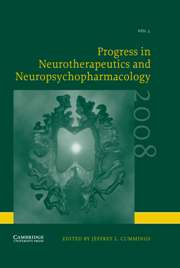No CrossRef data available.
Article contents
New Directions in Pediatric Neuro-Oncology Practice: Impact of the Children's Cancer Group Study 9933, a Phase II Study of High-Dose Chemotherapy Before Radiation in Children with Newly Diagnosed High-Grade Astrocytoma
Published online by Cambridge University Press: 21 July 2006
Extract
ABSTRACT
Background: Despite the use of surgery, radiotherapy (RT) and standard chemotherapy, childhood high-grade astrocytoma (HGA) continues to carry a dismal prognosis. In an attempt to identify effective drug combinations and an alternative treatment strategy, the Children's Cancer Group (CCG) conducted a nationwide clinical trial that prospectively evaluated 102 children with HGA and post-operative residual disease for efficacy and toxicity of four courses of high-dose chemotherapy (HDCT) before RT. Design and methods: Patients were randomly assigned to one of three couplets of drugs: carboplatin/etoposide (Regimen A); ifosfamide/etoposide (Regimen B); or cyclophosphamide/etoposide (Regimen C). After HDCT, all patients received local RT followed by lomustine and vincristine. Results: Of 76 evaluable patients (median age 11.95 years, range 3–20 years), 30 patients relapsed during HDCT and 11 others did not complete HDCT due to toxicity. Non-hematologic serious toxicities were common (29%) and 21% of patients did not receive RT. Objective response rates were not associated with amount of residual disease and did not statistically differ between regimens: 27% (Regimen A), 8% (Regimen B), and 29% (Regimen C). Overall survival (OS) was 24 ± 5% at 5 years and did not differ between groups. The 5-year, event-free survival (EFS) for all patients was 8 ± 3% and 14 ± 7% for Regimen A (p = 0.07). Patients who responded to HDCT had a nominally higher survival rate (p = 0.03 for trend). Interpretation: HDCT prior to RT provides no additional clinical benefit to conventional treatment in HGA, regardless of the amount of measurable residual tumor, and adversely effects ability to complete RT. Strong consideration should be given to investigating alternative strategies and novel biologic agents for this disease.
- Type
- Review Article
- Information
- Progress in Neurotherapeutics and Neuropsychopharmacology , Volume 2 , Issue 1 , March 2007 , pp. 109 - 122
- Copyright
- © 2007 Cambridge University Press


